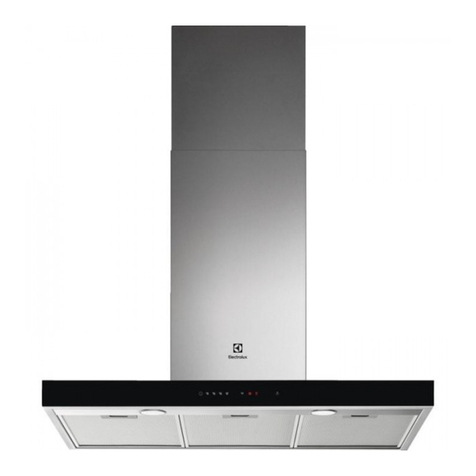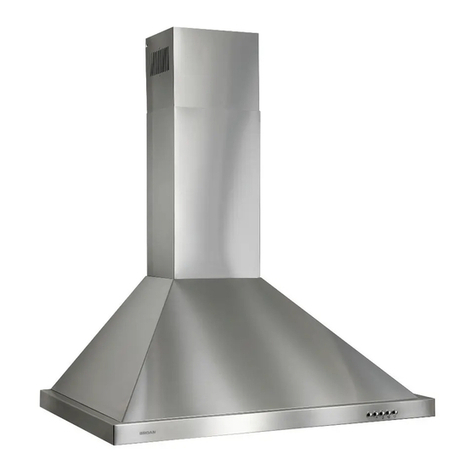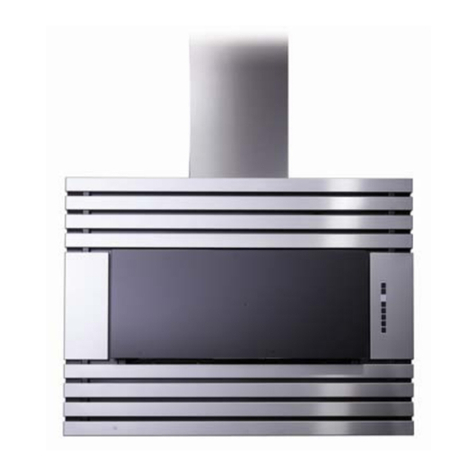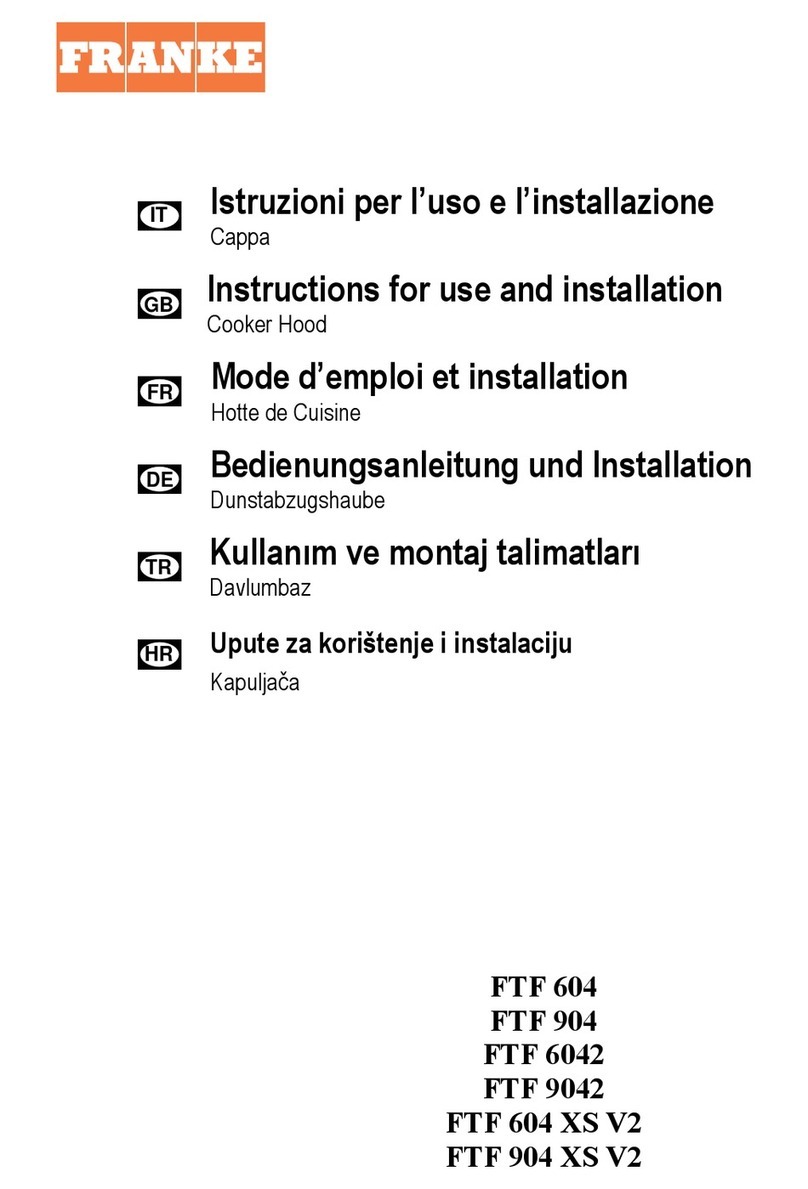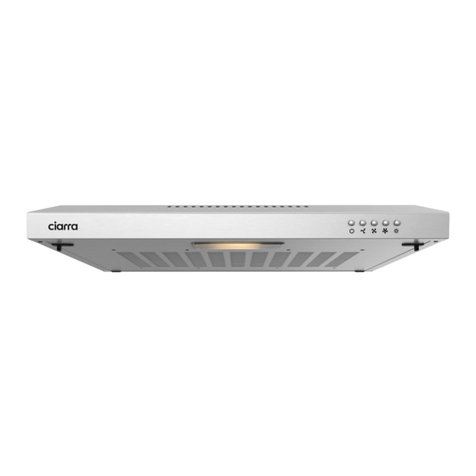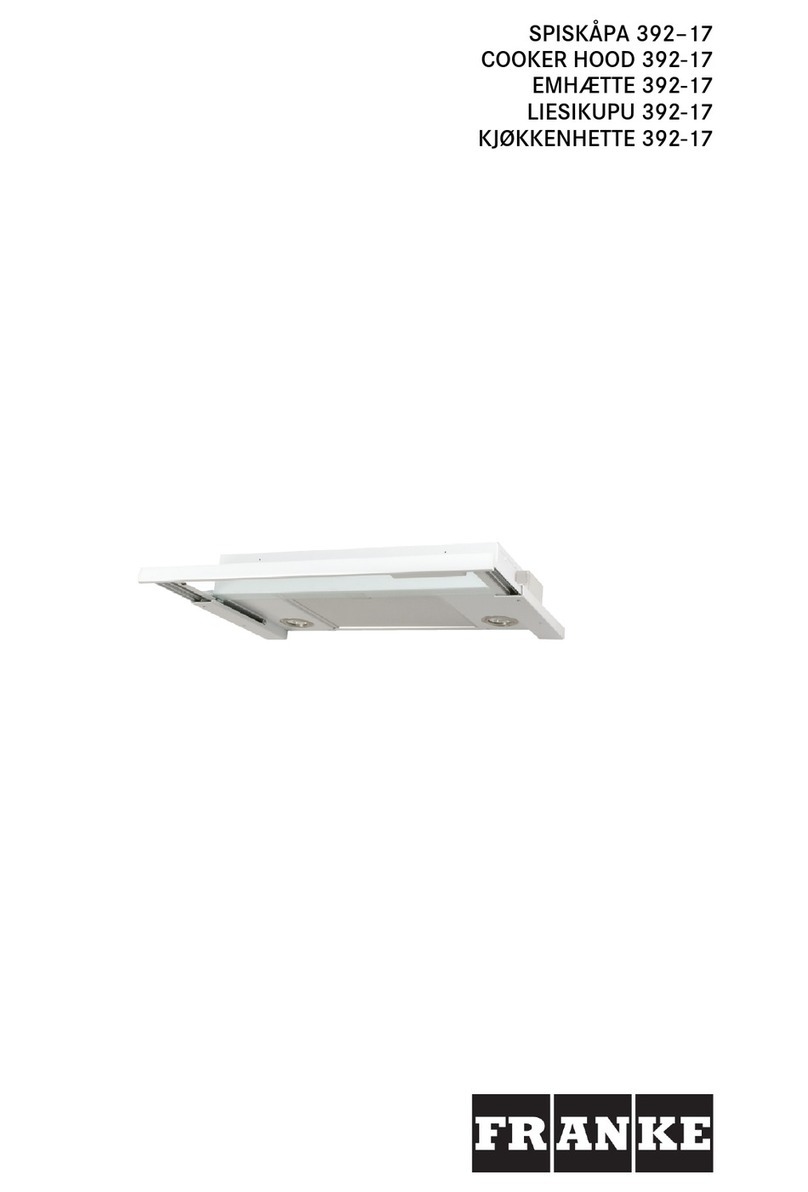HAUTAU RAZ 908 User manual

Product description
The SHEV control unit is intended to be used as a power supply
and control device for the connected equipment (refer to section
“Equipment overview”). The smoke and heat exhaust control unit
HAUTAU RAZ 900 contains all the electronics needed to control
24 V DC drives for windows and smoke vents: in the event of fire
and for general ventilation. In case of power failure, the emergency
power supply guarantees the operation of the SHEV facility for at
least 72 hours.
Features
Opening in an emergency situation:
Manually by fire pushbutton, automatically by smoke and heat
detector or third-party activation.
Closing in the event of an emergency:
Manually by SHEV-CLOSE button (Reset) inside the fire
pushbutton.
Daily ventilation and exhaustion:
By ventilation pushbutton “OPEN-STOP-CLOSE” (continuous
opening) and automatic closing by superordinate wind/rain
sensor.
The included features depend on whether the system operates as
an SHEV control unit or merely as a central ventilation unit and on
which modules have been incorporated.
The smoke and heat exhaust control unit RAZ 9… has been
designed as a modular central control unit. The maximum output
current of the power supply is indicated by the label RAZ 908, while
the expansion stage of the groups is identified by the designation
RAZ 908-.
Its basic configuration consists of a housing with screw plate as
well as a top hat rail, a transformer, a rectifier module with filter
capa citors, a load module, a group module, a smoke and heat
exhaust ventilation module, a smoke detector module, and
battery packs.
The number of group modules corresponds to the maximum
power output of the central unit. Sharing this power output with
other groups is not possible. The number of smoke detector
modules corresponds to the number of smoke detectors
(max. 10 detectors/module). The maximum output current of the
power supply or the maximum breaking capacity of the modules
may not be exceeded.
The SHEV control unit is designed to run on emergency power
for 72 hrs.
While the central ventilation units LZ 9.. are constructed in the
same way as the SHEV control units, they lack the modules
RWA 9, RM 9, LAD 9 and the battery packs.
© HAUTAU GmbH
Reprint even in excerpts not without the publisher‘s approval.
In consideration of progress, we reserve the right to apply construction modifications and, consequently, change any figures, dimensions, wire
specifications etc. The figures do not show items in their actual size and are also not of the same proportion.
Installation and
operating instructions
Central smoke exhaust unit
RAZ 908, 916, 924, 932, 940, 948, 956, 964, 972
Central ventilation unit
LZ 908, 916, 924, 932, 940, 948, 956, 964, 972
04/2019 209546H
t

2
Contents
Page
Product description ........................................................... 1
Important safety instructions ............................................. 2
Installation information ....................................................... 3
Features ........................................................................... 3
Wiring diagram ................................................................. 4
Equipment overview .......................................................... 4
Housing dimensions ......................................................... 5
Wire lengths and cross sections ....................................... 6
Mounting of the control unit .............................................. 6
Overview of the major components and modules ............. 7
Additional diagram drives ................................................ 16
Installing the battery packs ............................................. 17
Fastening the live wires ................................................... 17
Function test .................................................................. 18
Elimination of fault functions ............................................ 18
Care, Service, Maintenance, Disposal ............................. 18
Technical specifications .................................................. 19
CAUTION
The safety of personnel requires that the
following instructions be observed.
Incorrect installation may result in severe or
fatal injury!
The control unit complies with the state of
the art. This applies to performance, material,
functioning and the safe operation of the control
unit.
Mortal danger by electric shock!
The smoke and heat exhaust control
unit operates with 230 V AC / 50 Hz.
Mortal danger if coming into contact
with cables that are live.
During service/maintenance work at
the unit, the supply voltage has to be
disconnected via isolating link at all
poles. Protect the system against
unintentional re-starting. The isolating
link must be clearly marked. The mains
fuse must not exceed the rated current
of 6A. Pull off the connecting plugs of
the emergency power battery packs.
Make sure that all potential-free inputs
of the wires are disconnected from the
power supply.
Risk of crushing and pinching!
To avoid misuse, a risk assessment
acc. to Machinery Directive 2006/42/EC
is required at the installation site.
Protective measures are to be applied
according to EN 60335-2-103/2016-05.
The mounting of the control unit has to be
performed by trained, qualified and safety-
conscious electrical staff according to these
installation and operating instructions. These
include electrical fitters or skilled fitters with
training in the field of electrical equipment
installation. All work on live components may be
performed only by a skilled worker with comple-
ted professional training in the field of electrical
equipment installation.
WARNING:
Important safety instructions!

3
Features
• modular 24 V smoke and heat exhaust control unit (SHEV)
• to control windows for the purpose of smoke removal and
daily ventilation
• scaled current output at increments from 8 A to 72 A at
increments of 8 A
• modular design with expansion options thanks to additional
RAZ 900 modules
• versatile connection options for fire pushbuttons, smoke de-
tectors, ventilation pushbuttons and wind and rain sensors
• indicators for operating states and error messages
• set-up in one or several SHEV groups and one or several
ventilation groups
• monitoring of motor cables for cable breakage and short
circuits up the last conduit box
• emergency power supply for 72-hour emergency operation
• set-up and function according to standards prEN 12101-9
for control unit and EN 12101-10 for power supply.
Installation information
Make sure your shipment is complete prior to commencing
installation. Please notify your supplier immediately in case of
any irregularities.
Connect all components only in accordance with the terminal
connection diagrams included with the central unit and the
drives.
Strictly adhere to all DIN, VDE, government safety organisa-
tion and state building regulations (for example VDE 0100,
VDE 0833, VDE 0800, BGV).
The introduced external wires that conduct voltages in excess
of 33 V AC or 60 V DC must be connected immediately next
to the terminal screws in such a way that they cannot come
into contact with other live components when they are loos-
ened (e.g. by tying them off).
The mains connection may only be established with cables
that have been approved according to DIN VDE 0250-xxx.
All wires except the feeder wire conduct 24 V DC and must
not be laid together with electric power lines (follow VDE regu-
lations). In any case, the wiring type must be coordinated with
the responsible authority (fire department, TÜV, fire protection
authority, etc). All maximum wire lengths and cross sections
must correspond with the technical specifications. Observe the
maximum possible connection options of the control unit.
The position of the central unit and the fire pushbuttons
must also be coordinated with the responsible fire protection
authority (observe state building regulations). Use suitable
mounting material.
When installing the drives, please pay attention to the occur-
ring forces.
Never wire a star-wired network, but always proceed from fire
pushbutton to fire pushbutton, from smoke detector to smoke
detector, from heat detector to heat detector, and from drive
to drive.
Make sure to connect shunt and terminating resistors for
central smoke and heat exhaust ventilation and alarm system
loops.
Two monitoring diodes (1N 4007) must be installed in the last
conduit box in front of the drive and in accordance with the
terminal connection diagram.
Smoke and heat exhaust ventilation systems must be serviced
at least once a year by the trained personnel of a company
specialised in smoke and heat exhaust ventilation and in ac-
cordance with all statutory regulations (building code and state
building regulations).
Finish by checking all functions as well as function and oper-
ation displays on the central smoke exhaust unit and the piv-
oting range of the drives. Complete the assembler’s certificate
included in the control book and forward the request form
and the corresponding envelope to the operator of the central
smoke exhaust unit.
All drawings, installation and operating instructions
and the control book must be kept with the central unit.
Please store these documents in their entirety in the
central smoke exhaust unit for future reference.

4
HAUTAU LT
HAUTAU LT
3 x *
4 x 0,8
2 x 0,8
6 x 0,8
6 x 0,8
7
7
7
66
55 5
4
1
3
2
1 2
RWA 9
RM 9 RM 9
GS 9 GS 9 WR 9 PFA 9
PFW 9
3 x *
WG/H 10
REM/H 10
(WREM/H 10)
Description of equipment: see below
1 Ventilation pushbutton LT or LTA
for manual operation of ventilation function
2 Fire pushbutton FR 900
for manual release and reset of SHEV function
3 Smoke and heat exhaust control unit RAZ 9.
Power supply with integrated control functions for SHEV and
ventilation
4 Wind transmitter WG/H 10, rain sensor REM/H 10
(WREM/H 10)
for automatic closing of windows, top-hung windows and light
domes in case of rain and/or wind
5 Conduit box (by customer)
6 Smoke detector RM 523
for automatic release of SHEV function via smoke detection
7 Drives
for opening and closing of windows, top-hung windows and
light domes to remove smoke and to ventilate in a natural way
Equipment overview
* see “Wire lengths and cross sections”
** The cable connecting the drives
must have a wire that serves as a
monitoring line.
Feeder wire
230 V ~
** Drive line
Beispielanlage RAZ 900
Wiring diagram

5
908-1
8
1
1
600
400
210
293
1
1
916-1
16
2
1
600
600
300
703
1
2
916-2
16
2
2
600
600
300
586
2
2
924-1
24
3
1
600
600
300
643
1
3
924-2
24
3
2
600
600
300
526
2
3
924-3
24
3
3
600
600
300
409
3
3
932-1
32
4
1
1000
800
300
1304
1
4
932-2
32
4
2
1000
800
300
1226
2
4
932-3
32
4
3
1000
800
300
1148
3
4
932-4
32
4
4
1000
800
300
1070
4
4
940-1
40
5
1
1000
800
300
1255
1
5
940-2
40
5
2
1000
800
300
1176
2
5
940-3
40
5
3
1000
800
300
1098
3
5
940-4
40
5
4
1000
800
300
1020
4
5
940-5
40
5
5
1000
800
300
942
5
5
948-1
48
6
1
1000
800
300
1194
1
6
948-2
48
6
2
1000
800
300
1116
2
6
948-3
48
6
3
1000
800
300
1038
3
6
948-4
48
6
4
1000
800
300
960
4
6
948-5
48
6
5
1000
800
300
882
5
6
948-6
48
6
6
1000
800
300
804
6
6
956-1
56
7
1
1000
1000
300
1274
1
7
956-2
56
7
2
1000
1000
300
1196
2
7
956-3
56
7
3
1000
1000
300
1118
3
7
956-4
56
7
4
1000
1000
300
1040
4
7
956-5
56
7
5
1000
1000
300
962
5
7
956-6
56
7
6
1000
1000
300
884
6
7
956-7
56
7
7
1000
1000
300
806
7
7
964-1
64
8
1
1000
1000
300
1214
1
8
964-2
64
8
2
1000
1000
300
1136
2
8
964-3
64
8
3
1000
1000
300
1058
3
8
964-4
64
8
4
1000
1000
300
980
4
8
964-5
64
8
5
1000
1000
300
902
5
8
964-6
64
8
6
1000
1000
300
824
6
8
964-7
64
8
7
1000
1000
300
746
7
8
964-8
64
8
8
1000
1000
300
668
8
8
972-1
72
9
1
1000
1000
300
1159
1
9
972-2
72
9
2
1000
1000
300
1081
2
9
972-3
72
9
3
1000
1000
300
1003
3
9
972-4
72
9
4
1000
1000
300
925
4
9
972-5
72
9
5
1000
1000
300
847
5
9
972-6
72
9
6
1000
1000
300
769
6
9
972-7
72
9
7
1000
1000
300
691
7
9
972-8
72
9
8
1000
1000
300
613
8
9
972-9
72
9
9
1000
1000
300
535
9
9
Housing dimensions
For the basic control units
Control
unit Output
current (A)
Width
(mm)
Height
(mm)
Depth
(mm)
Clearance
Top hat rail
Fire
groups
Ventilation
groups
GS
9
RWA
9

6
50
0
20
0
25
0
30
0
35
0
12345678
40
0
45
0
50
0
6
2 x 2,5
0
50
10
0
15
0
20
0
25
0
4
1,5
2,5
Wire lengths and cross sections
Calculation formula:
Cable cross section [mm2] = total current consumption [A] x max. wire lengths [m]
73
Attention:
The clamping points in the control system are designed
for wire cross sections of up to 2.5 mm2. For larger cross
sections, reduce the cross section immediately in front of the
control unit. To prevent electric shock, connect the ground
wire first before connecting any other lines such as the mains
supply line or any external lines. Observe all applicable VDE
regulations.
The wires of the drives may not be extended and have to
be connected directly in a conduit box, or, depending on
the type of drive, to the overload cutoff or the synchronous
module. The maximum wire lengths from the power source
(SHEV/central ventilation unit or power supply) to the last
conduit box (or overload cutoff, synchronous module)
have to be in accordance with the wire cross sections
used and with the maximum power consumption for each
drive group. When using the drives in safety equipment for
smoke removal or smoke control, perform wiring in accor-
dance with the functional integrity classes E30 or E90 of the
Model Wiring Guideline (MLAR).
Security systems need line monitoring. Lines with the
appropriate number of wires for the supply of the drives
and line monitoring have to be provided. The green/yellow
protective conductor must not be used as a line monitor.
Mounting of the control unit
The SHEV control unit has to be installed at a safe place, where
it is protected against fire and smoke effects. The RAZ 900 has
to be mounted in such a way that it is easily accessible for the
maintenance staff (e.g. ensure installation at eye level). It must be
possible to open the door all the way. The label “Smoke outlet”
has to be applied at a suitable place.
Use suitable mounting material to attach the control unit at the
designated borings.
Make sure to properly earth the housing. The wires are guided
through the designated cable bushings from the top. Ensure
a clear labelling of the wires of all components, which will be
connected to the RAZ 900, as well as the feeder wires of the
power supply. This is necessary for the proper assignment of
the connections in case the modules have to be replaced.
Cable cross-section [mm²]
Cable length [m]
Total power requirement [A]

7
3
2
1
1
2
3
}
GND
}
+24 V DC
21 V AC
+27,6 V DC
8 A
(16 A / 24 A)
}
GLR 9/8
(GLR 9/24)
RAZ
924 T 25 A
916 T 15 A
908 T 7,5 A
Supply
GLR 9/8 21 V AC, max. 8 A
GLR 9/24 21 V AC, max. 24 A
Output voltage max. 32 V DC (when idle)
Load cycle
GLR 9/8 4 min. / 8 A; 16 min. / 1.2 A
GLR 9/24 4 min. / 24 A; 16 min. / 1.2 A
Battery pack voltage 24 V DC (max. 27.6 V)
Battery pack fuse
RAZ 924 T 25 A (24 A power supply)
RAZ 916 T 15 A (16 A power supply)
RAZ 908 T 7.5 A (8 A power supply)
Overview of the major components and modules
Technical specifications
Rectier module
GLR 9/8, 9/24
The rectifier module is used to supply the control unit with
power. It is screwed directly next to the transformer on the
screw plate. The wires are connected via terminal screws and
following the terminal diagram. The transformer connector
is slipped on via cable lugs. The central unit is overload and
reverse battery protected.
A short circuit at the “+” and “-” terminals of the 24 V DC feed
lines in the control unit triggers the transformer’s mains fuse
and the battery pack fuse.
This will result in complete failure.
In this case, all LEDs in the central unit, the fire pushbuttons,
and the ventilation pushbuttons will turn off.
The
transformer is used to provide 230 V AC supply
voltage to the central control unit. It consists of a 21 V AC
power coil and a 27 V AC loading coil. The mains terminals
and the mains fuse are installed on the transformer. The
value of the mains fuse is:
8 A – power supply unit T 1.6 A
16 A – power supply unit T 3.5 A
24 A – power supply unit T 5.0 A
Switch to emergency power operation without disruption
(operator guide mode).
Fuse sticker
Trafo
Battery pack fuse
Fuse
+ Battery pack
- Battery
pack
Connection to
screw plate
Load card

8
+
-
L1
1235 7
1
3
21 V AC
3
2
1
N
PE
GLR 9/ ..
LAD 9.1
1234567 9
8
}
}
}
+
GND
+24 V DC
27 V AC
+27,6 V DC
2
1
6
5
4
3
LED
T 2,5 A /
250
V
J1
J2
R.SP
PTC
L.SP
Supply 27 V AC; 1,5 A
Charging voltage 27,6 V DC (at 10K instead of
setting 2 battery pack with jumper J1 5set)
Fuse 1 T 2,5 A / 250 V
Monitoring yes, cyclically approx. every 25 minutes
Space requirements 55 mm
Overview of the major components and modules (cont.)
Load module LAD 9.1
Is used to create the charging voltage and for monitoring the
battery pack connection.
The load module is fed by a separate transformer coil via a
fuse 1 located on the module. A potentiometer 2 is used to set
the charging voltage. The load module monitors the battery pack
and mains connection and issues an error in case of a disruption.
The yellow LED on the load module will come on as soon as the
mains and battery pack connection is not in order. The module
will switch off the voltage supply to the ventilation control system
in case of a mains voltage failure. The sensor at the end of the
PTC cable is positioned close to the battery back (see image),
while the other end is connected to the PTC plug 3 on the load
module. If the PTC sensor measures a temperature above 0 °C
in the area of the battery pack, the charging voltage is 27,6 V.
Temperatures below 0 °C will increase the charging voltage
to 30 V. Jumper J2 4 is used to enable/disable the charging
function, while the potentiometer 6 is used to set the minimum
discharge voltage (pre-set at the factory). This requires that a
voltage of 19,2 V be applied between GND and pin 7 and that the
potentiometer 6 be set to the level where the LED is barely on/
goes out.
Description of the jumpers (plug-in jumpers) 4 + 5
J1 charging voltage
J1 set: Charging voltage setting
J1 not set: Operating status
J2 minimum discharge voltage
J2 set: Minimum discharge voltage setting
J2 not set: Operating status
Technical specifications
Trafo
PTC cable Sensor
Connection to
screw plate
Mounting rail
Error mains/
battery pack
connection
Malfunction
Mains
Battery pack

9
RB RB
LB LB
----++++
Motor LBTLBT
GS 9
2
1
3
4
1
2
3
5
6
56
7
4
8
7
9
0
1234
1
23
1N 4007
-- ++
RB RB
LB LB
----++++
Motor LBTLBT
GS 9
2
1
3
4
1
2
3
5
6
56
7
4
8
7
9
0
1234
1
23
1N 4007
-- ++
Supply voltage 0 24 V DC max. 32 V DC
Motor connection 1 max. 8 A
Malfunction indicator 8 yellow LED
Vent. pushbutton connection 2 LT or LTA (HAUTAU Type)
Vent. pushbutton bus (LTB) 7 +24 V active
Ventilation bus (LB) 5 +24 V active
SHEV bus (RB) 6 +24 V active
Fuse 4 8 drives T 6,3 A (or according
to requirements)
Opening time limitation up to 60 s
Space requirements 55 mm
Group control module GS 9
The group control module is used to control the motors,
monitor the motor lines for cable break, and include an
EMERGENCY STOP function for power-controlled windows
in the event of an emergency.
Technical specifications
Installation
Voltage is supplied by a 4-pin terminal 0 via strands of the same
size 2,5 mm².
The wires of the motor and ventilation pushbutton are connected
to terminals 1 and 2 according to the terminal diagram.
The internal wiring of SHEV bus (RB) 6 and ventilation bus
(LB) 5 is connected via 3-pin jumpers.
Overview of the major components and modules (cont.)
Conduit box
Ventilation pushbutton
Display
Close
Open
Supply
Drive
Drive
L-Button
L time
(ventilation time)
Contacts
for voltage
metering
Fuse sticker
Malfunction
L-Zeit
Malfunction
(yellow LED)

10
Diode
Diode
STOP 1
optional
LTBLTB
RB RBLB LB
- - ++
Motor
L-Zeit
GS 9
1234
1
23
RESET
0,5 ~ 4
1,0 ~ 11
1,5 ~ 17
2,0 ~ 23
2,5 ~ 29
3,0 ~ 35
3,5 ~ 42
4,0 ~ 49
4,5 ~ 54
5,0 ~ 61
The group control module GS 9 is used to control drives.
The signals issued by the smoke and heat exhaust ventilation
bus 6 are given the highest priority. The signals issued by
the ventilation bus 5 are given the second highest priority.
The signals issued by the ventilation pushbutton bus 7 are
given the lowest priority.
If an SHEV OPEN command is given, the motor output will
be switched to OPEN again every 2 minutes for a duration of
30 minutes.
The motors are connected to a 3-pin plug-in terminal 1.
The terminal 3 of this plug-in terminal is intended to monitor for
cable break and trigger an EMERGENCY STOP.
The motor output is protected by a fuse which is integrated into
the guard circuit.
Cable break in the area of the motor lines and EMERGENCY
STOP operation is indicated by a yellow LED 8 (which flashes
during emergency stop operation).
A potentiometer 3 can be used to change the operating mode
of the module:
- When the potentiometer is set to zero, the operating mode of
the ventilation pushbutton is “OPEN-STOP-CLOSE”,
- A different potentiometer position means operating mode
“OPEN-CLOSE”.
The set voltage value determines the time during which the
drives will be moving towards the “OPEN” position. The STOP
button is without function when the timer is switched on. The
running period does not interfere with the smoke and heat
exhaust ventilation functionality.
The running period voltage is measured at the contacts 9.
The voltage values are assigned to the following running
periods in “ON” direction:
To ensure observance of guideline ZH1/494, install EMERGEN-
CY STOP pushbuttons on windows that are less than 2.5 m in
height. The design of these EMERGENCY STOP pushbuttons
must comply with standard DIN EN 60204.
The devices used to protect against crushing hazards and the
EMERGENCY STOP button used as an “opener” are connect-
ed in series and integrated into the motor guard circuit (see
drawing). When combined with the GS 9 module, they provide
the following functions:
- If the direction in the module is switched to “OPEN”, the
disruption of line 3 is only defined as a “malfunction” in the
central control unit.
- If the direction “CLOSE” is switched as a ventilation function
(includes ventilation pushbutton, superordinate ventilation,
wind/rain sensor, delayed smoke and heat exhaust venti-
lation reset) and wire 3 is interrupted (equal to actuation of
EMERGENCY STOP pushbutton), the GS 9 module will trigger
an internal malfunction. The drives in this group will be stopped,
while the internal malfunction remains active and is indicated
in the fire pushbutton as well as on the module. Actuating
the module in “OPEN” direction will reset the error message
mentioned above and allow the drive to move again during the
next “CLOSE” operation.
Pressing and holding the “Reset” button in the fire pushbutton
will disable the EMERGENCY STOP function.
Releasing the reset button will enable the EMERGENCY
FUNCTION again.
If a connected timer is switched on, the ventilation function
will be blocked after an emergency stop has been triggered.
Pressing the reset button in the fire pushbutton or on the RWA
9 module of the central control unit will enable the ventilation
function again.
An additional reset button is installed on the smoke and heat
exhaust ventilation bus of the group module in the central
ventilation units LZ 9 to reset the EMERGENCY STOP function
manually (see drawing below). In the event of an EMERGENCY
STOP, the control unit must be reset by issuing an “OPEN” or a
reset command (in combination with a timer).
Overview of the major components and modules (cont.)
Voltage [V] Time [s]
L-pushbutton
Malfunction Reset button in an LZ9 ..
Central ventilation unit
Drive

1
2
3
4
5
6
-
-
+
+
J1
Reset
RWA 9
RB RB
LB
LB
--++
1
2OK
GND
3
7
5
6
7
8
w
9
r
e
q
0
q
0
1
2
3
4
5
6
-
-
+
+
J1
Reset
RWA 9
RB RB
LB
LB
--++
1
2OK
GND
3
7
5
6
7
8
w
9
r
e
q
0
q
0
11
Supply voltage r 24 V DC max. 32 V
SHEV pushbutton connection 7 up to 10 SHEV push-
buttons (FR 900)
Display Alarm 9 red LED
Display Malfunction 8 yellow LED
SHEV bus (RB) q +24 V active
Ventilation bus (LB) 0 +24 V active
Monitoring Disruptions and short
circuits for pushbutton
“Open” and “Close”
Outputs “OK”, “Alarm” and
“Malfunction” short-circuit protected
Space requirements 41 mm
Smoke and heat exhaust
ventilation module RWA 9
Is used for signal analysis and monitoring the fire pushbut-
ton wires. The SHEV OPEN and RESET wires are monitored
for breakage and short circuits.
Description
There is a 6-pin plug-in terminal on top of the SHEV module
RWA 9 that is used to connect the fire pushbutton 7.
The outputs “Display OK”, “Display Alarm” and “Display
Malfunction” are overload protected.
The wires “SHEV OPEN” and “RESET (CLOSE)” are
monitored for disruptions and short circuits.
A yellow “ERROR” LED 8 will light to indicate an error in
the area of the fire pushbutton. In case of emergency power
operation the yellow “ERROR” LED 8 will flash.
The red “ALARM” LED 9 will be lit when the “OPEN” signal
is active on the smoke and heat exhaust ventilation bus,
while the output “Display Alarm” will be activated for the
SHEV pushbutton. Pressing the RESET button in the SHEV
pushbutton or on the smoke and heat exhaust ventilation
module will block the ventilation function for a minute.
An active error signal on the smoke and heat exhaust ventila-
tion bus will result in the disabling of the output “Display OK”
and the enabling of the output “Display Malfunction” (flashes
during emergency power operation).
The RESET button !D will activate the SHEV OPEN signal
on the SHEV bus.If the jumper w is set, each malfunction
will trigger an alarm.
Installation
Voltage is supplied by a 4-pin terminal r via strands of the
same size 2.5 mm².
The SHEV pushbutton is connected to a 6-pin plug-in
terminal 7 according to the terminal diagram. The internal
wiring of SHEV bus (RB) !A and ventilation bus (LB) !Ö is
connected via 3-pin jumpers.
Technical specifications
Overview of the major components and modules (cont.)
Reset
SHEV Open
Malfunction
Malfunction
Alarm
Alarm

RB RB
LB LB
OK
1
2
13456
213456
213456
2
RM 523 RM 523
RM 523
10K
1
23
45
45
6
-
-
-
+
+
+
RM 9
RM 9
--++
1
2
10k
1k 0,7 W
RB RB
LB LB
OK
1
2
13456
213456
213456
2
RM 523 RM 523
RM 523
10K
1
23
45
45
6
-
-
-
+
+
+
RM 9
RM 9
--++
1
2
10k
1k 0,7 W
12
Supply voltage 6 24 V DC max. 32 V
Smoke detector connection 1 up to 10 pcs RM 523;
quiescent current max. 1,2 mA;
release current 19 ... 225 mA
Display alarm 2 red LED
Display OK 3 green LED
SHEV bus (RB) 5 +24 V active
Terminal resistor 10k
Transfer resistor 2k
Monitoring Disruption and short circuit
Space requirements 37 mm
Smoke detector module RM 9
Example: Connection of 1 central
fire alarm system
When a smoke detector has been triggered, smoke detec-
tor module RM 9 will issue the “OPEN” signal on the smoke
and heat exhaust ventilation bus.
Technical specifications
Description
A maximum of 10 RM 523 smoke detectors can be
connected to the loop of one smoke detector module.
The smoke detector connection is monitored for disruptions
and short circuits.
Another option is to connect a central fire alarm system,
which, however, requires that only smoke detectors or only
one central fire alarm system be connected to one module.
The green LED 3 will turn off in the event of a central
control unit malfunction or emergency power. When the
smoke detector is triggered, the red LED will be lit 2.
If the ”CLOSE“ signal is active on the SHEV bus, the voltage
supply to the smoke detector loop will be cut off to reset
the smoke detector. At the same time, a malfunction signal
is prevented from being issued on the smoke and heat
exhaust ventilation bus.
Installation
Voltage is supplied by a 4-pin terminal 6 via strands of the
same size 2,5 mm².
The wires to the smoke detector loop are connected to the
2-pin plug-in terminal 1 according to the terminal diagram.
The internal wiring of SHEV bus (RB) 5 and ventilation bus
(LB) 4 is connected via 3-pin jumpers.
Overview of the major components and modules (cont.)
Example:
Connection of 3 smoke detectors
to smoke
detector
red
LED Alarm
10 k of resistance
in the last detector
green
LED
to central fire
alarm system
Central fire
alarm system

13
2
1
346
5
6
57
5321
WR 9
LB2 LB2
LB1
LB1
J1
Z A
}
-
-
+
+
--++
4
T 400 mA /
250 V
+24 V
GND
2
1
346
5
6
57
5321
WR 9
LB2 LB2
LB1
LB1
J1
Z A
}
-
-
+
+
--++
4
T 400 mA /
250 V
+24 V
GND
0,3 2
0,6 3
1,0 4
1,4 5
2,0 6
2,9 7
3,6 8
Wind transmitter with reed contact, display of wind force
in Beaufort (optional).
Display Wind alarm (red LED) 1
Set point adjustment by potentiometer 2
Jumper 3 for switching the display
Factory setting of the wind force 4
Start delay for wind 20 s
Switch-off delay for wind and rain 60 s
Supply voltage 24 V DC
(max. 32 V)
Output, max. current load: 400 mA
Number of wind/rain sensors: 1
Ventilation bus 1 (LB 1) (LB 1) 6 +24 V active
Space requirements 37 mm
Wind/rain module WR 9
The wind/rain module counts the impulses issued by the wind trans-
mitter and attributes them to the wind force. The module will also
transfer the signal issued by the rain sensor to the internal bus.
Description
A wind/rain alarm will be triggered after a start delay every
time the wind force exceeds a certain set point. A wind/rain
alarm will also be triggered when the rain sensor input is
active; however, without the start delay.
When the wind force falls below the set point and the rain
sensor signal is inactive, the wind/rain alarm is reset after a
certain switch-off delay. The signal issued by the rain sensor
is transferred to the internal bus.
To adjust the set point of the wind/rain module, slip on the
jumper 3 and turn the potentiometer 2. Setting jumper 4
to “Z” activates the “CLOSE” signal on the LB1 bus 6.
Setting jumper 4 to “A” activates the “OPEN” signal on the
LB1 bus 6.
Installation
Install the wind transmitter in a suitable location unsheltered
from the wind. Follow the terminal diagram or the included
control system to connect the wind sensor. When connecting
the WR 9 to other control elements, make sure these
elements are completely discharged and the emergency
power supply is switched off. In the presence of wind, the
display or the volt meter must show a value.
The display must be adjustable when the jumper 3 is
slipped on and the potentiometer 2 is turned.
Voltage is supplied by a 4-pin terminal 7 via strands of
the same size 2,5 mm². The internal wiring of the ventila-
tion buses (LB1) 6 and (LB2) 5 is connected via 3-pin
jumpers.
Technical specifications
Overview of the major components and modules (cont.)
Voltage [V] Wind force [Beaufort]
Rain sensor
Wind transmitter
Contacts for wind
force indicator
Setting jumper to „Z“
activates the “Close”
signal on the LB1 bus
Wind alarm (red LED)
Display
Wind/rain
Set point
Adjusting the set point with a volt meter:

14
1
3
4
9
8
5
6
5
6
2
7
RB RB
LB LB
PFE 9
GND GND
A
T 400mA/250V
Z
GND
-
+
-
+
+24 V
}
}
123456
LL
J1 J2
RR
-
-
+
+
--++
1
3
4
9
8
5
6
5
6
2
7
RB RB
LB LB
PFE 9
GND GND
A
T 400mA/250V
Z
GND
-
+
-
+
+24 V
}
}
123456
LL
J1 J2
RR
-
-
+
+
--++
Supply voltage 7 24 V DC max. 32 V
Connection 1 +/-24 V DC and 2 relays
Display 3 2x green LEDs
Ventilation bus (LB) 6 +24 V active or
SHEV bus (LB) 5 +24 V active
Fuse 4 max. 400 mA
Space requirements 37 mm
Open
Close
Potential-free
input module PFE 9
Used to connect two potential-free inputs.
Description
The potential-free input module PFE 9 consists of a 6-pin
terminal 1 used for connecting two potential-free input
signals, which control one relay each. In addition, two termi-
nals are supplied with 24 V DC voltage, which can be used
to power external devices.
The fuse 4 is used to protect the voltage supply circuit,
which is switched off in the event of a mains failure.
The module output is connected via 3-pin connectors
5/6.
Jumpers 2 can be used to link the inputs with the GND.
The input signals are indicated by LEDs 3.
Use jumpers J1 8 and J2 9 to switch the input signals
“ON” and “OFF” onto the ventilation or smoke and heat
exhaust ventilation bus.
Output +24 V is switched off during emergency power opera-
tion.
Installation
Voltage is supplied by a 4-pin terminal 7 via strands of the
same size 2,5 mm². The wires to the external devices are
connected to the 6-pin plug-in terminal 1 according to the
terminal diagram. The internal wiring of SHEV bus (RB) 5 or
ventilation bus (LB) 6 is connected via 3-pin jumpers.
Technical specifications
Overview of the major components and modules (cont.)

15
1
2
56
6
3
5
5
1
2
5
3
P
FA 9
P
FW 9
RB RB
LB LB
PFA 9
ÖÖ
SSAA
A
1.
1.
2.
2.
1.
2.
A
123456
-
-
+
+
--++
1
2
56
6
3
5
5
1
2
5
3
P
FA 9
P
FW 9
RB RB
LB LB
PFA 9
ÖÖ
SSAA
A
1.
1.
2.
2.
1.
2.
A
123456
-
-
+
+
--++
1
2
56
6
3
5
5
1
2
5
3
P
FA 9
P
FW 9
RB RB
LB LB
PFA 9
ÖÖ
SSAA
A
1.
1.
2.
2.
1.
2.
A
123456
-
-
+
+
--++
Supply voltage 6 24 V DC max. 32 V
Output PFA 9 1 2x change-over contacts
24 V DC, 1 A
Output PFW 9 1 2x change-over contacts
230 V AC, 1 A
Diaplay 2 2x green LEDs
Ventilation bus (LB) 5 +24 V active or
SHEV bus (RB) 5 +24 V active
Jumper 3 „Close“ and „Malfunction“
Space requirements 37 mm
Normally closed contact
Normally closed contact
Normally open contact
A
A
Normally open contact
Close
Malfunction
Potential-free output module
PFA 9 and PFW 9 for
230 V of alternating voltage
Potential-free output module PFA 9
Is used for the connection of two potential-free change-over
contacts to external devices. The relays are controlled by
“OPEN” and “CLOSE” signals issued by the smoke and
heat exhaust ventilation or ventilation bus. The jumpers can
also be set such that a “Malfunction” signal is issued.
Potential-free change-over module PFW 9
Works in the same way as PFA 9, but its output contacts
are designed for 230 V AC.
Technical specifications
Overview of the major components and modules (cont.)
Description
The potential-free output module PFA 9 consists of a 6-pin terminal 1
for connecting external devices via two potential-free change-over
contacts. The two relays are controlled by “OPEN” and “CLOSE”
signals issued by the smoke and heat exhaust ventilation or ventila-
tion bus 5. A jumper 3 can be used to switch one relay between
the signals “Close” and “Malfunction”. If the relay is active, the
corres ponding green LED 2 will be lit.
Installation
Voltage is supplied by a 4-pin terminal 6 via strands of the same
size 2,5 mm².
The wires to the external devices are connected to the 6-pin plug-in
terminal 1 according to the terminal diagram.
Wires that can conduct voltages in excess of 33 V AC or 60 V DC
must be connected immediately next to the terminal screws in such
a way that they cannot come into contact with other live components
when they are loosened (e.g. by tying them off at the cable conduit).
The internal wiring of SHEV bus (RB) 5 or ventilation bus (LB) 5 is
connected via 3-pin jumpers.
1.
„Alarm“
2.
„CLOSE“ or
“Malfunction“

16
12
12 12 12
3
M
FTA 3.1
12
SYN 2K
1234
12
SF 225
ZV/R
ZV/R
SF 225
ZV/R
ZV/R
12341234
12
1N 4007
1N 4007
1N 4007
M
M
1234234
1234
1234
1234
1234
12341234 12341234
1234
1234 1234 1234 1234
1234
SYN 2K
1234
12341234
1234
1234
33
12
ZV
A1 A2 A3
12
12 12 12
3
FTA 3.1
ZV
A1 A2 A3
M1 M1 M1
M1 M1 M1
1N 4007
1234
1234
M1
M
M M
1 2
3
1 2
3
1 2
3
1 2
3
3
1 2 1 2 3 1 2 3
Additional diagram drives
Polarity with drives OPEN
Chain drive SKA 20
Locking drive SM 2
Drives with overload cutoff, additional locking
and sequence control FTA 3.1 - 24 V DC Synchronous drives with exter-
nal synchronisation SYN 2K
Sync drives
Sync drives
Sync drives
Sync drives
Synchronous drives with additional locking
and external synchronous sequence SF 225
Open
black
black
Close
Conduit box
Conduit box
brownbrown
blueblue
Conduit box
Conduit box
Conduit box
Supply - (+)
Supply - (+)
Supply - (+)
Supply - (+)
Supply + (-)
Supply + (-)
Supply + (-)
Supply + (-)
Loop
Loop
Loop
Loop
Conduit box
Conduit box
Conduit box
Chain drive SKA 45, 50 Chain drive SKA 30, 60 Twin
PRIMAT kompakt
Electric fitting stay SBS
Spindle drive SA
Conduit boxConduit box
Conduit box
Conduit box
Conduit box Conduit box
Supply - (+)
Supply - (+)
Supply - (+)
Supply + (-)
Supply + (-)
Supply + (-)
Loop
Loop
Loop
black-white
black-white
black-white
black-white
Open
Close
Open
Close
Open
Close
Open
Close
Open
Close
Open
Close
black
black

17
Installing the battery packs
Disconnect the control unit, if connected, from the mains
supply and open it.
Install the battery packs into the central control unit as
shown in the drawing. Use the battery pack bridge to
connect the positive pole with the negative pole of the other
battery pack, as shown in the drawing.
Follow the terminal diagram to connect the battery pack wire.
To prevent dangerous gases from developing and to ensure
the central control unit remains operational for 72 hrs. in
case of a mains failure, we recommend using the following
battery packs:
SBV 7 - 12 / 7 - 12 L 12 V 7 Ah
SB 7,2 - 12 L 12 V 7,2 Ah
SBLV 17-12i 12 V 17 Ah
SSBL 18 - 12i 12 V 18 Ah
The battery packs must be replaced no later than
every four years.
Fastening the live wires
Battery pack bridges
Battery pack bridge
Battery pack
Position cable ties here

18
Function test
Check if the central unit functions properly after successfully
installing all components (fire pushbuttons, smoke or heat
detector, drives, ventilation pushbuttons, etc).
- Switch the 230 V AC power supply on and slip on the
battery packs.
- The green LED on LAD 9 is lit.
- All other modules must show only green LEDs.
- Push the alarm button (red) on the fire pushbuttons to turn
the system on. The red LEDs in the fire pushbutton and on
the RWA 9 are lit.
- Check if all windows of the corresponding fire group are
opened all the way. Afterwards, close the windows by
pressing the RESET button (black) in the fire pushbutton.
- Use a smoke detector test control unit to trigger the
smoke detector; the (red) LED on the RM 9 will be lit, and
the windows will open.
- When using test gas for checking the smoke detectors,
you must press and hold the RESET button on the RWA 9
module or the fire pushbutton for 10 seconds in order to
set the RM 523 smoke detector to revision mode.
- Check the ventilation pushbuttons by pressing the OPEN,
STOP, and CLOSE buttons.
- Switch off the 230 V AC mains supply; the green LEDs will
turn off, and the yellow malfunction LEDs will start flashing
in the event of a malfunction.
Elimination of fault
functions
Green display LEDs on the load module are not lit
Error source:
- 230 V AC mains supply not connected
- Mains fuse switched off
- Connection to battery packs is not established
Error message “Mains / battery fault“ does not appear
- monitoring takes place cyclically approx. every 25 minutes
- it is necessary to wait for the appropriate time
Displays on SHEV module - yellow LED is lit/flashes –
Error source:
- Malfunction in the area of the fire pushbutton
- Break or short circuit in wire SHEV “OPEN” or “CLOSE”;
red LED is lit
- Alarm was triggered
Displays on smoke detector module – red LED is lit
Error source:
- A smoke detector in this group was triggered, green LED
is not lit
- 10K terminal resistor not installed in smoke detector
- Break or short circuit in smoke detector wire
- System runs on emergency power
Display in group control module – yellow LED is
lit or flashing
Error source:
- Cable break in the area of the motor lines
- EMERGENCY STOP button pressed
- Fuse on module defective
Display in wind/rain module – red LED is lit
Error source:
- The wind sensor has triggered a wind alarm
- The rain sensor was triggered
Displays in potential-free output module – green LEDs
are lit
Error source:
- The relays have been actuated by the signals issued by
the smoke and heat exhaust ventilation or ventilation bus
Displays in potential-free input module – green LEDs
are lit
Error source:
- The relays on the module have been actuated by the
signals issued by external devices
Care
Check all devices and cable connections for external
damage and dirt. The operability of smoke outlets, central
control units, fire pushbuttons, ventilation pushbuttons, etc.
must not be affected by, for example, structural measures
or stored goods.
Maintenance
Smoke and heat exhaust ventilation systems must be
serviced at least once a year by a company specialised in
smoke and heat exhaust ventilation and in accordance with
all statutory regulations (building code and state building
regulations).
To guarantee a reliable emergency power supply, have the
used battery packs checked and, if necessary, replaced on
a regular basis. The battery packs must be replaced no later
than every 4 years. Dispose of the battery packs properly as
required by all applicable legal regulations.
The inspection plate on the central unit must be renewed,
and a control book must be kept.
We recommend that you conclude a service contract.
Maintenance
If components have to be checked, repaired or replaced,
please contact the manufacturer. Use only original spare parts.
Modifications of connections are permitted only within the limits
of the connection options.
Disposal
Dispose of this product, when it has reached
the end of its service life, in accordance with
the provisions of the Electrical and Electronic
Equipment Act.
Before working on electrically powered windows and dome
lights, make sure to set them to the desired position. They
must be disconnected via isolating link at all poles and
safeguarded against unintentional re-starting. The isolating
link must be clearly marked. This step allows you to
disable the ventilation function while performing work on
the windows.Observe the maintenance and operating
regulations for power-controlled windows, doors, and gates.
CAUTION:

19
Technical specications
Power supply according to EN 12101-10
Consisting of Transformer, rectifier module, load
module and battery packs
Primary power supply Mains
Secondary power supply Battery pack
max. interrupt time
between power sources < 1 ms
Duty cycle Duty cycle 20;
4 min On / 16 min Off (Standby)
Class acc. to EN 12101-10 Class A; applicable in all systems
Primary power supply
Mains voltage (8 A to 72 A) 230 V AC / 50 Hz (-10% / +10%)
Feed Single-phase feed
Voltage 24 V DC (rated) (19 V - 32,5 V)
Power consumption
per 8 A of current output ≤290 W
Connection terminal Screw-type terminal on transformer,
2,5 mm²
Fuse (on transformer) 8 A power supply: T 1,6 A
16 A power supply: T 3,5 A
24 A power supply: T 5,0 A
Secondary power supply
Battery pack 2 x 12 V
Battery capacities 8 A: 7 Ah or 7,2 Ah
16 A: 17 Ah or 18 Ah
24 A: 17 Ah or 18 Ah
32 A: 7Ahor 7,2Ah + 17Ah or 18Ah
40 A - 48 A: 2x 17 Ah or 2x 18 Ah
56 A: 7 Ah or 7,2 Ah +
2x 17 Ah or 2x 18 Ah
64 A - 72 A: 3x 17 Ah or 3x 18 Ah
Battery type Lead
Emergency power supply 72 h
Current output after 72 h
in emergency power supply 8 A - 72 A for 180 s according to
DIN EN 12101-10
Charging time (80% capacity) 24 h
Connection terminal Flat plug
Monitoring yes, cyclic approx. 25 minutes
Fuse (on the rectifier module) 8 A power supply: T 7,5 A
16 A power supply: T 15 A
24 A power supply: T 25 A
Control panel according to prEN 12101-9
Consisting of SHEV module, smoke detector
module and group control module
Class according to
prEN 12101-9 Class C: Control panel without
detector
Output drives
Voltage 24 V DC (rated) (19 V - 32,5 V)
Ripple ≤9,1%
Current (rated) 8 A per output of group control
module
Current (short-time) 10 A (for < 10 ms)
Opening/closing operation Reversal of voltage polarity
Pulse-off time during
reversal of polarity yes, approx. 2 s
Pulsing according to
prEN 12101-9 yes, every 2 min.
Automatic clearing no
Line monitoring yes, up to the last conduit box by
monitoring diodes with 3rd line
Connection terminals Screw-type terminal 2,5 mm²
Fuse T 6,3 A
Material and mechanical characteristics
Dimensions see Set-up, chapter “Housing and
battery pack dimensions”
Housing Sheet steel for surface installation,
cable feed from the top
Colour grey
Halogen-free yes
Silicone-free yes
RoHS-compliant yes
Connection and operation
applicable for SHEV yes, type RAZ 9xx
applicable for ventilation yes, types RAZ 9xx and LZ 9xx
Ventilation function in
case of mains failure no, ventilation blocked
Maintenance once a year
Change of battery packs every 4 years and in case of
fault function
Installation and environmental conditions
Nominal temperature 20 °C
Ambient temp. range -5 °C to +40 °C
Installation situation dry
Applicable for outdoor install. no
Protection class IP 30 (acc. to DIN EN 60529)
Approvals and certificates
Controlling equipment certified by TÜV based on
prEN 12101-9
Power supply certified by TÜV according to
EN 12101-10
CE-compliant yes, according to EMC Directive
2004/108/EC and Low-voltage
Directive 2006/95/EC
RoHS-compliant yes, according to Directive
2011/65/EC
Protection class Class I
IMPORTANT NOTE:
The module must not be used separately for purposes other than those described herein.
Outputs
Fire pushbutton automatic detectors Ventilation pushbutton Wind/rain sensor
applicable for models HAUTAU FR 900 .. RM 523 and TM 523 HAUTAU LT, LTA and
double rocker switch HAUTAU WG/H, REM/H
and WREM/H
Voltage 24 V DC (rated) (19 V - 32,5 V)
Output, max.
current load 120 mA 120 mA 120 mA 400 mA
Line monitoring yes yes no no
max. number 10 10 10 1
Emergency power supply yes yes no no
Fuse electronic T 400 mA / 250 V
Connection terminal Screw-type terminal 2,5 mm²
For more information, refer to the description of the modules.

HAUTAU GmbH | Wilhelm-Hautau-Str. 2 | 31689 Helpsen | Germany | Tel +49 5724/393-0 | info@hautau.de | www.hautau.de
This manual suits for next models
17
Table of contents
Popular Ventilation Hood manuals by other brands
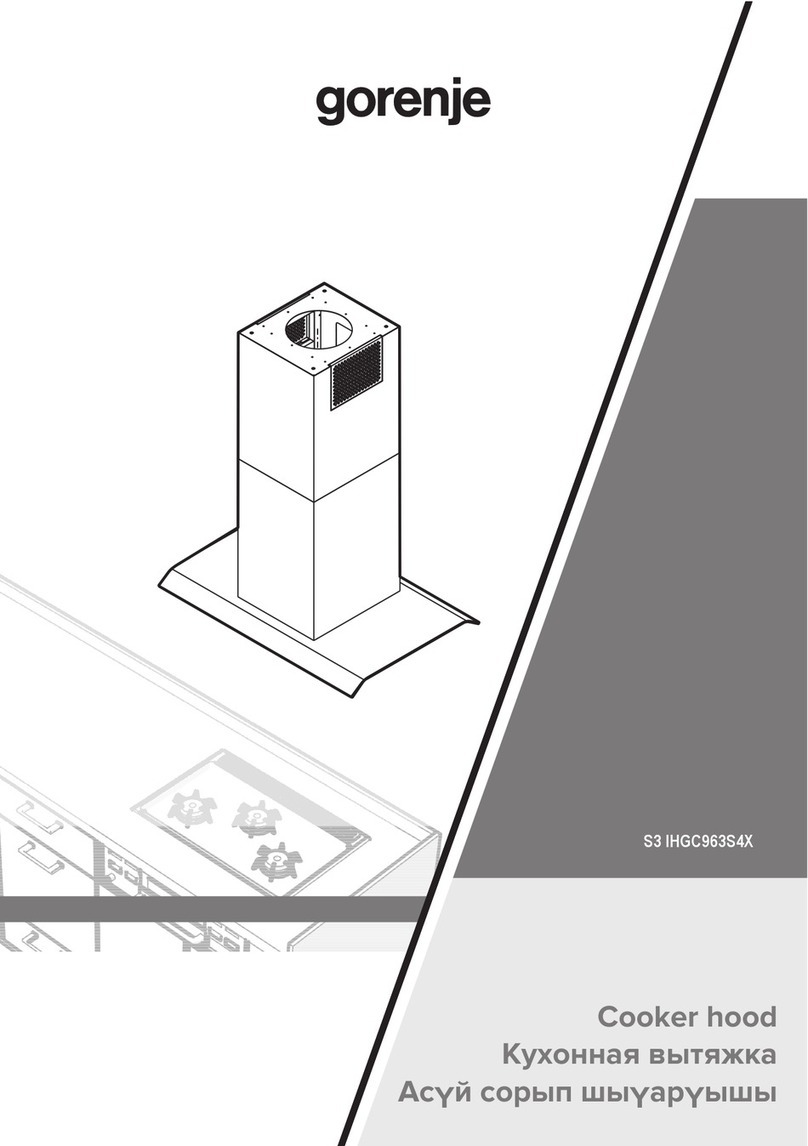
Gorenje
Gorenje S3 IHGC963S4X manual

KOBE
KOBE ISX2136SQB-1 Installation instructions and operation manual

U.S. Products
U.S. Products ADVANTAGE-100H Information & operating instructions

Kuppersberg
Kuppersberg DUDL 4 LX Technical Passport

Framtid
Framtid HW280 manual
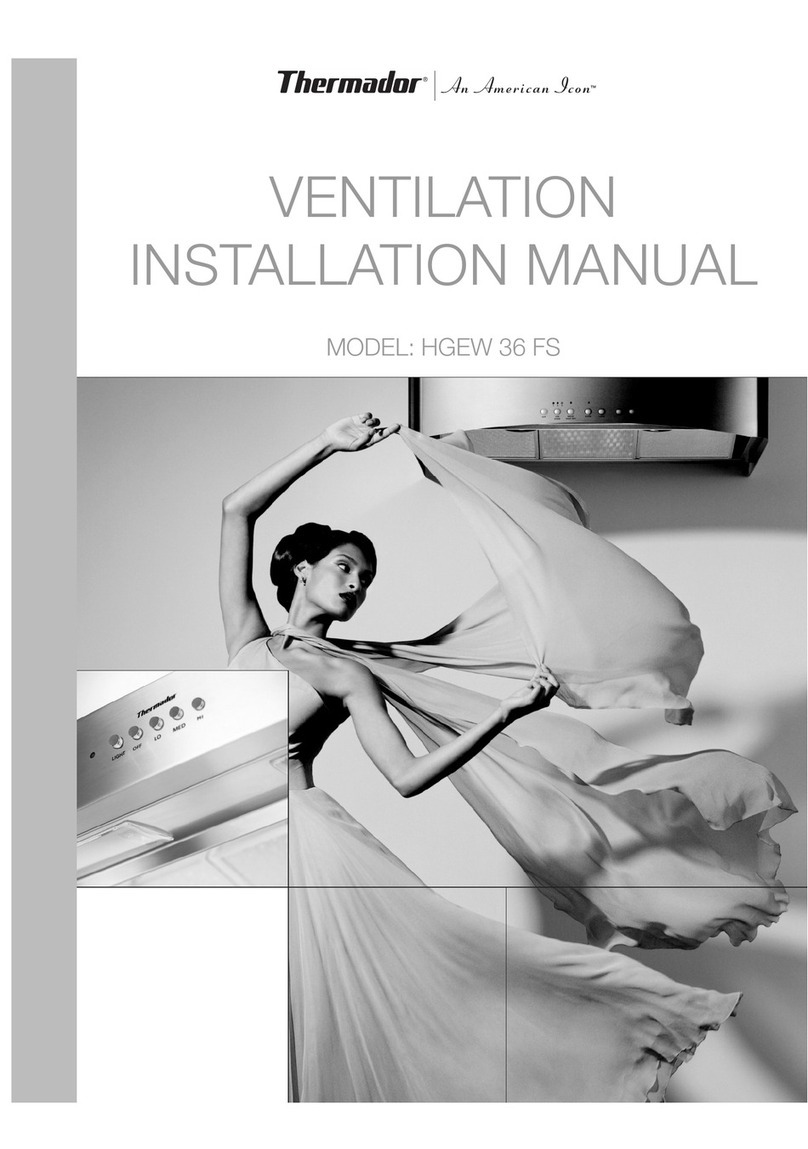
Thermador
Thermador HGEW 36 FS installation manual
